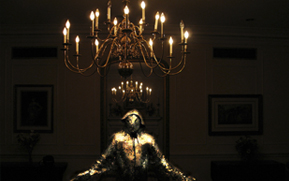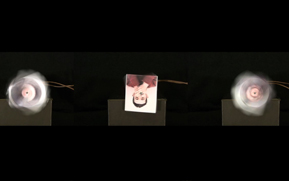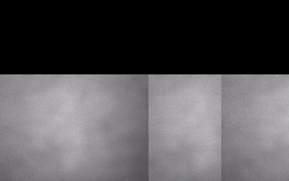8ª edición: Del 12 al 18 de diciembre 2016 | English

![]() JAPAN MEDIA ARTS
JAPAN MEDIA ARTS
![]() FESTIVAL
FESTIVAL
![]()
![]() ARS ELECTRONICA
ARS ELECTRONICA
![]()
![]() ART FUTURA
ART FUTURA
![]()
![]() MUNDOS DIGITALES
MUNDOS DIGITALES
![]()
![]() Media DOME
Media DOME
![]()
![]() FEM Link-Art
FEM Link-Art
![]()
![]() MIDEN
MIDEN
![]()
![]() NOW & AFTER Moscú
NOW & AFTER Moscú
![]()
![]() CINEWEST. Sidney
CINEWEST. Sidney
![]()
![]() DIGITAL LANDSCAPE
DIGITAL LANDSCAPE
![]() & Programa Curators
& Programa Curators
![]() - TIME is Love
- TIME is Love
![]()
![]() - LIMA. Perú
- LIMA. Perú
![]()
![]() - Argentina
- Argentina
![]()
![]() MADE IN CANARIAS
MADE IN CANARIAS
![]()
![]() IMAGEN DIGITAL
IMAGEN DIGITAL
![]() Videoarte
Videoarte
![]() Videodanza
Videodanza
![]() Cortometraje/Film/3D
Cortometraje/Film/3D
![]() Web Film
Web Film
![]() Animación
Animación
![]()
![]() Arte Ciencia Innovación
Arte Ciencia Innovación
![]() Artificial life
Artificial life
![]() Software art
Software art
![]() Trangenic art
Trangenic art
![]() Generative art
Generative art
![]() Bioart
Bioart
![]() Nanotecnología
Nanotecnología
![]() Geospatial storytelling
Geospatial storytelling
![]() Videojuegos
Videojuegos
![]() Robótica
Robótica
![]() Free Software
Free Software
![]() 2D & 3D Animación
2D & 3D Animación
![]() Net-art
Net-art
![]() Comunidades Digitales
Comunidades Digitales
![]() Redes Sociales
Redes Sociales
![]() Blog, videoblog
Blog, videoblog
![]() Desarrollo Apps
Desarrollo Apps
![]() Plataformas móviles
Plataformas móviles
![]() Visualización datos
Visualización datos
![]() Mapping
Mapping
![]() Acciones telepresencia
Acciones telepresencia
![]()
![]() somos
somos
![]()
![]() patrocinadores y
patrocinadores y
![]() colaboradores
colaboradores
![]()
![]() fotos de la sede
fotos de la sede ![]()
![]() lugar
lugar
![]()
![]()
![]() evento 2009
evento 2009
![]()
![]() evento 2010
evento 2010
![]()
![]() evento 2011
evento 2011
![]()
![]() evento 2012
evento 2012
![]()
![]() evento 2013
evento 2013
![]()
![]() evento 2014
evento 2014
![]()
![]() evento 2015
evento 2015
![]()


IMAGEN DIGITAL
-CORTOMETRAJE/LARGO/3D
-WEBFILM
-ANIMACIÓN
-VIDEOARTE
-VIDEODANZA
![]()
Convocatoria internacional 2016
![]()

Francesca Leoni y Davide Mastrangelo
Forlì. Italia
www.leonimastrangelo.com
Proyecto: Simulacro
A simulacrum is a representation or imitation of a person or thing. In contemporary society we virtually build images of ourselves to relate to others and to the world. An image that doesn't really need to to be truthful but only truth like.
tag: videoart

Frank McCauley
Rockville. MD. USA
https://vimeo.com/168874348
Proyecto: Constellation Tree
Experimental video exploring themes from classic science fiction and horror films such as The Shining, 2001: A Space Odyssey, and more contemporary films such as Sunshine.
tag: videoart

Fran Orallo
Glasgow. UK https://vimeo.com/146230754
Proyecto: Autorretrato cinetico
Video experimental a modo de tríptico, que reflexiona sobre la dualidad identidad/alineación. En el video se muestra una maquinaria que hace girar tres versiones diferentes de un mismo retrato, al hacer funcionar el mecanismo la imagen se desdibuja, difuminando la características del retratado.
tag: videoart

Karlsson Fredrik Karlshamn. Suecia https://vimeo.com/160757791
Proyecto: Finding the past
This is an abstract work of art allowing the viewer to make their own interpretation.
tag: videoart
Gabin Cortez-Chance
East Boston. U.S.A.
https://vimeo.com/gabincortezchance
Proyecto: The Invisible Hand of the Muzhik
Several years ago I read Adam Smith's "..A Wealth of Nations" in a effort to defend my "Radical" political views. Something I found myself doing on a fairly regular basis at the time. All though rarely if ever did I run into someone who had read Karl Marx's "Capital" and who was still anti socialism/communism. I thought the least I could do is read the original manifesto of capitalism. Before I even opened the cover, I had decided that I totally disagreed with everything in this book. And that after I read it, I would be better able to explain why I disagreed with everything in that said book. What I was not prepared for was to find aspects of the book that made sense to me. Adam Smith was not the original "greed is good" Ayn Rand pseudo philosopher I had imagined. He was honestly concerned with the betterment of society as a whole. And it then occurred to me that if he could see what his abstract ideas had turned into with the industrial revolution( which was still in the early stages at the end of his life), and the continued advancement of technology. I believe he would not be too happy. And that he would say that the intent, and core reasoning of his ideas had been miss interpreted. In particular "The Invisible Hand of the Market". This Video is not just about showing the similarities between Lenin, and Smith, and there altruistic intent. But it is also a play on the Idea of the diametrically opposed duality. Since ancient Egyptian times dualities have played a major part in all aspects of our lives. The familiar Yin and Yang, Good and Evil, the benevolent and the malevolent. There are countless ways to say this, and almost every religion and philosophy has their own version. Politically speaking we have Communism vs. Capitalism, Liberal vs. Conservative, Democrat vs. Republican….etc. Now I consider myself to be a Communist, but does that mean I have to sleep with Stalin, Pol Pot, or Kim Jong-un. All though the base ideas of Marxism, as well as Capitalism, can be fairly simple. It's over all application to the world are not. And great Ideas can be misinterpreted to do terrible things. Which is what I think happened with both Lenin, and Smith. Every one has taken a wrong turn at some point in their lives. And sometimes you need to take two steps back to go one step forward. And there can be many different forwards. It is not a black and white world. It is a world of infinite shades, colors, and possibilities. It is not a " Either your with us, or your with the Terrorists.." world of dualities. And just because two people disagree, does not mean one of them is wrong. It is a world of Multiplicities, a world of layers, a world of Stratum.
tag: videoart

Gio Lingao
https://vimeo.com/160761811
Proyecto: Degrees Of Separation
tag: videoart

Hector Castells-Matutano
París. Francia
Proyecto: This is not an abstract abstraction
La película se presenta como una conferencia audiovisual con matices esotéricos. El autor divaga sobre la realidad, el contexto y los estímulos que producen la obra de arte y el espacio físico y simbólico (si lo hay) de la creación. En la pieza la paradoja se construye a través de la oposición entre texto e imagen.
tag: videoart

